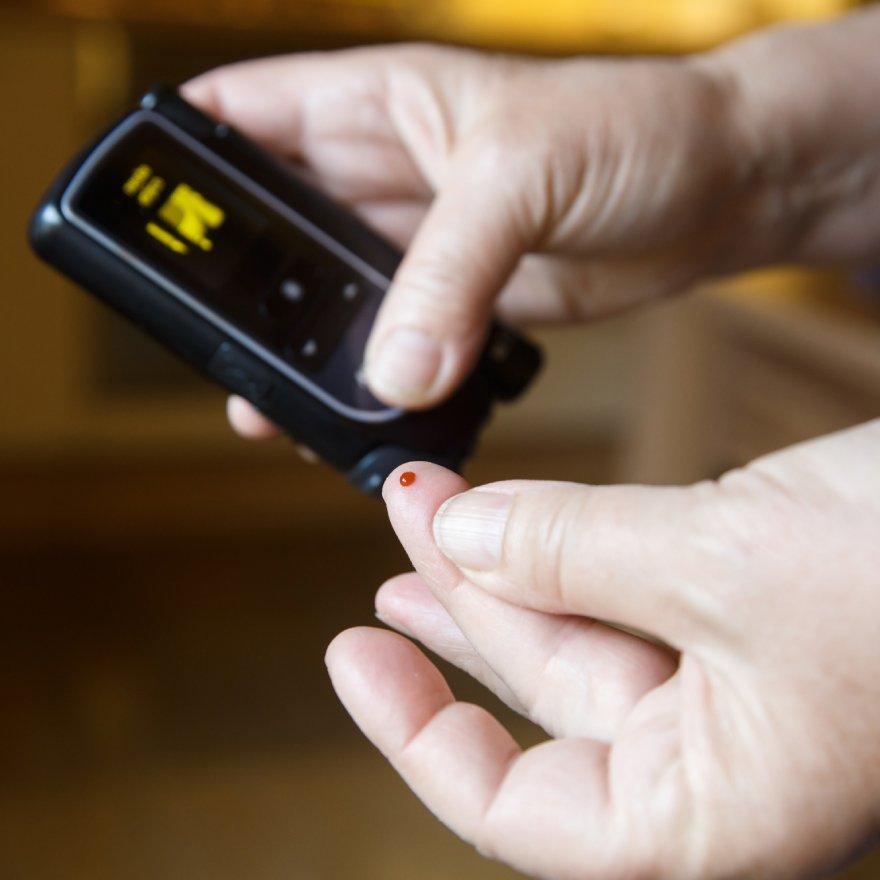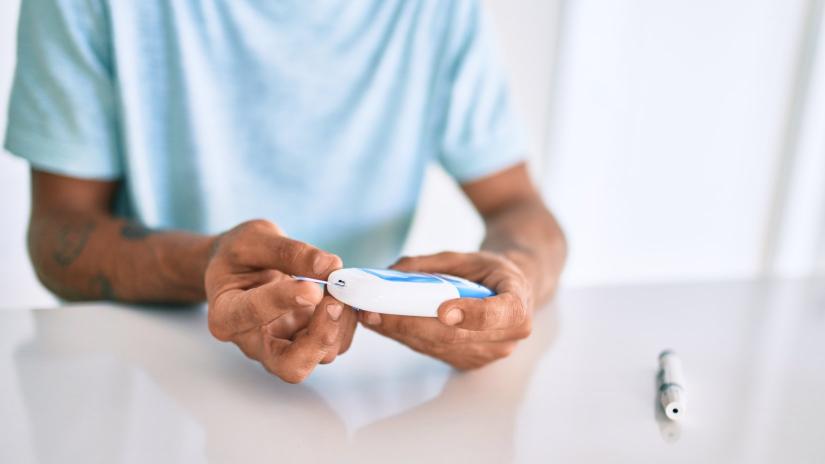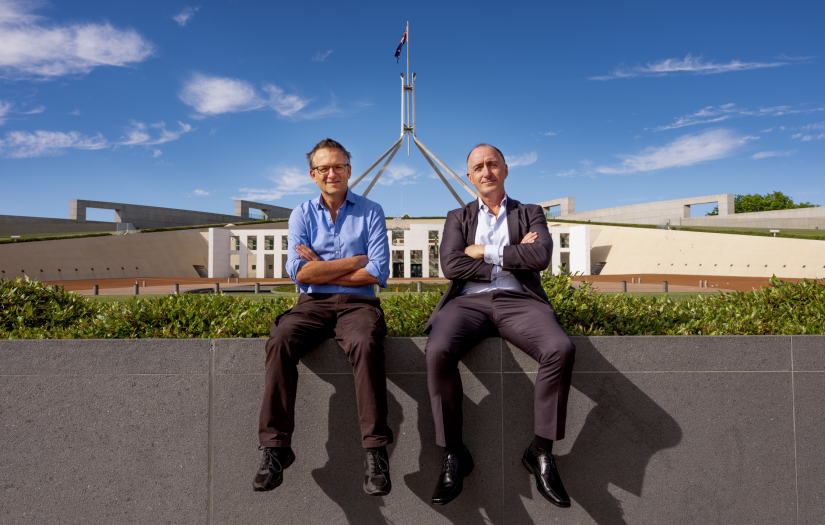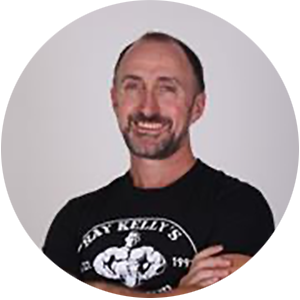Type 2 diabetes is the most prevalent chronic disease in Australia. While preventable, it has been seen as irreversible and treatment has focused on medications. Ray Kelly is determined to change all that.
It's not every doctoral student who gets to co-host a three-part television series with Dr Michael Mosley, the creator of the 5:2 diet.
It's not every doctoral student who is instrumental in changing policy on the single most prevalent chronic disease in Australia.
But then, Ray Kelly is not like every other PhD student.
The Kamilaroi man grew up in Mt Druitt, Western Sydney in poverty, and left school in Year 10. Diabetes hit home from birth, with the death of his grandfather from a heart attack aged 52.
Ray – now 52 himself but in rude health - was just three weeks old. His uncle died aged 44, a victim of heart disease.
"It was always front of mind, the issues around that," Ray said.
A better way to treat Type 2 diabetes
After joining a gym gave his drifting life purpose, he started work as a strength and conditioning coach with the Sydney Academy of Sport.
His academic career started relatively late with a Bachelor of Arts in Human Movement at UTS.
Always the maverick, he started funding himself to go to obesity conferences around the world, convinced that there was a better way to treat diabetes than through a cascade of drugs and insulin.
"Some people thought I was reckless and careless but it was all research-based and the outcomes were phenomenal," Ray said.
"The results were much better than you would see anywhere in the country.
The programs we run in remote communities are better than just about anything in the city.
Dramatic changes within 14 days
The Too Deadly for Diabetes Program aims to promote good nutrition, physical activity, weight loss, and lower blood glucose levels for Aboriginal people with diabetes in NSW.
The program runs over 10 weeks and participants are assisted with meal planning, an exercise program, education and motivation. It has been delivered across regional NSW in Bourke, Brewarrina and Walgett, and has recently been launched in Coonamble and Dubbo.
"Within the first 14 days, many people will see dramatic changes to their blood sugar and blood pressure," Ray says.
People had previously been taught how to live with diabetes rather than turn it around.
"Doctors have medication to fall back on - blood pressure, cholesterol, insulin.
"Yet within 10 years, 50% of the people with Type 2 diabetes will be on insulin.
"We have people diagnosed at aged 7 or 8, and a lot are in their 20s and 30s, it's usually a downward spiral from there."
The tragedy – according to Ray – is that what has become a major chronic disease worldwide is not only preventable, but it's reversible.
The effects of the disease are both real and unpleasant – gangrene leads to amputations of toes, feet and even legs; high blood pressure; kidney failure leads to years of dialysis and death; heart disease and cardiac arrests; even failing sight and blindness.
How the program works
The aims
While lowering average blood sugar is the primary goal, there are a range of other indicators of success:
- HbA1c <7%. Research has shown that current programs achieve this in less than 50% of patients. The program will aim to achieve this in at least 75% of patients.
- Weight loss of 5%-10% initial body weight
- Systolic blood pressure <140 and diastolic blood pressure <95
- Reduction in medications
- Education of patients to enhance self-management
The method
- Meal plans for healthy, cheap, low-calorie food. Cost – around $50 per week.
- Exercise program – starting with a 20-30 minute daily walk
- Education – including daily motivational videos delivered via an app and daily SMS messages.
- Patient contact and support – regular face-to-face meetings with health professionals.
Research leads to TV hosting duties
The UTS PhD is the result of decades of frustration with the entrenched medical model, offering sufferers little hope of anything better than maintenance.
"Change is difficult because there are lot of people pushing in a certain way," says Ray.
"In my PhD I'm doing a literature review, interviewing people whose lives have reversed Type 2 diabetes, and running an intervention and measuring the results."
So when renowned television health expert, Dr Michael Mosley, was researching his latest SBS series – Australia's Health Revolution – his producers contacted Ray.
They were interested in an interview, but were so impressed with his work that they ended up with a co-host.
The show demonstrates the extraordinary effects of a calorie-controlled diet on everybody's health, but most urgently those who are either pre-diabetic or already living with the chronic disease.
The results need to be seen to be believed. The series is currently streaming on SBS On Demand (external link).
"How many people doing a PhD get to do a TV show with Michael Mosley?" Ray says. "I am a spiritual guy, and I believe that my path has been guided. This is what I was born to do.
"I've put in a lot of work already, but now it's time for the big push."
Case study
In late 2020, the Too Deadly for Diabetes program started in Coonamble NSW (Pop. 2,700). The program was provided through the Coonamble Aboriginal Health Service.
Ray provided training to the nurse and Aboriginal health worker, who then rolled out the 10-week program to the community. In the first eight months, their patients lost a total of 922kg, with many patients achieving a reduction or removal of medications for Type 2 diabetes and/or hypertension.
The average weight loss has been between 8-10kg per person and the average reduction in HbA1c has been 1.5%. At 11 months, the total is now 1,459kg.
Neither the nurse or the Aboriginal health worker had ever provided a lifestyle program before.
-
What is Type 2 diabetes?
Type 2 diabetes is caused by visceral fat around the organs, especially the pancreas and the liver.
It is caused by high-calorie, processed foods and less movement so people are carrying more weight.
First Nations people are especially susceptible due to their genetics. They will store that around their organs even with a low BMI.
-

-
Graduate Research Student, Health Services Management




